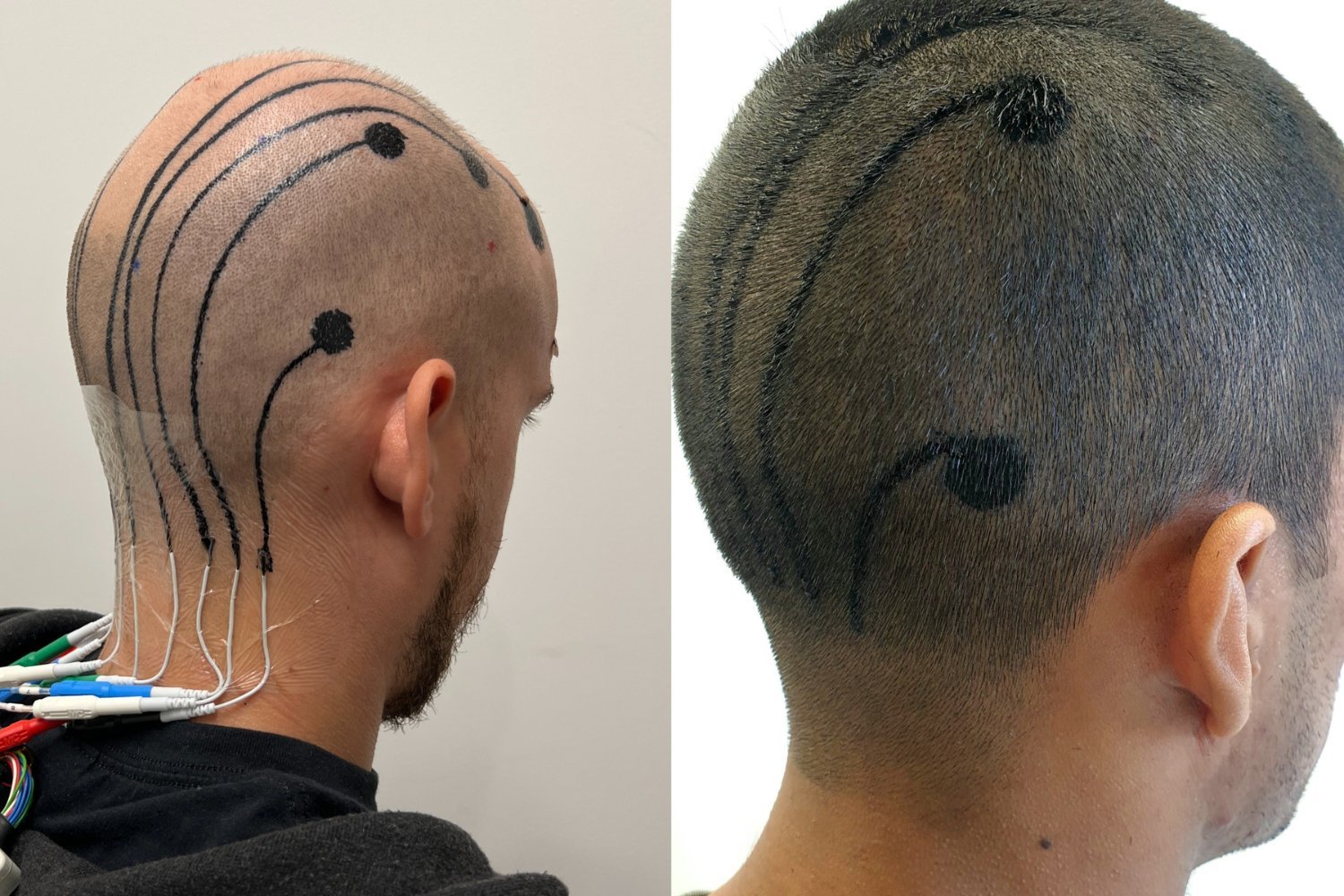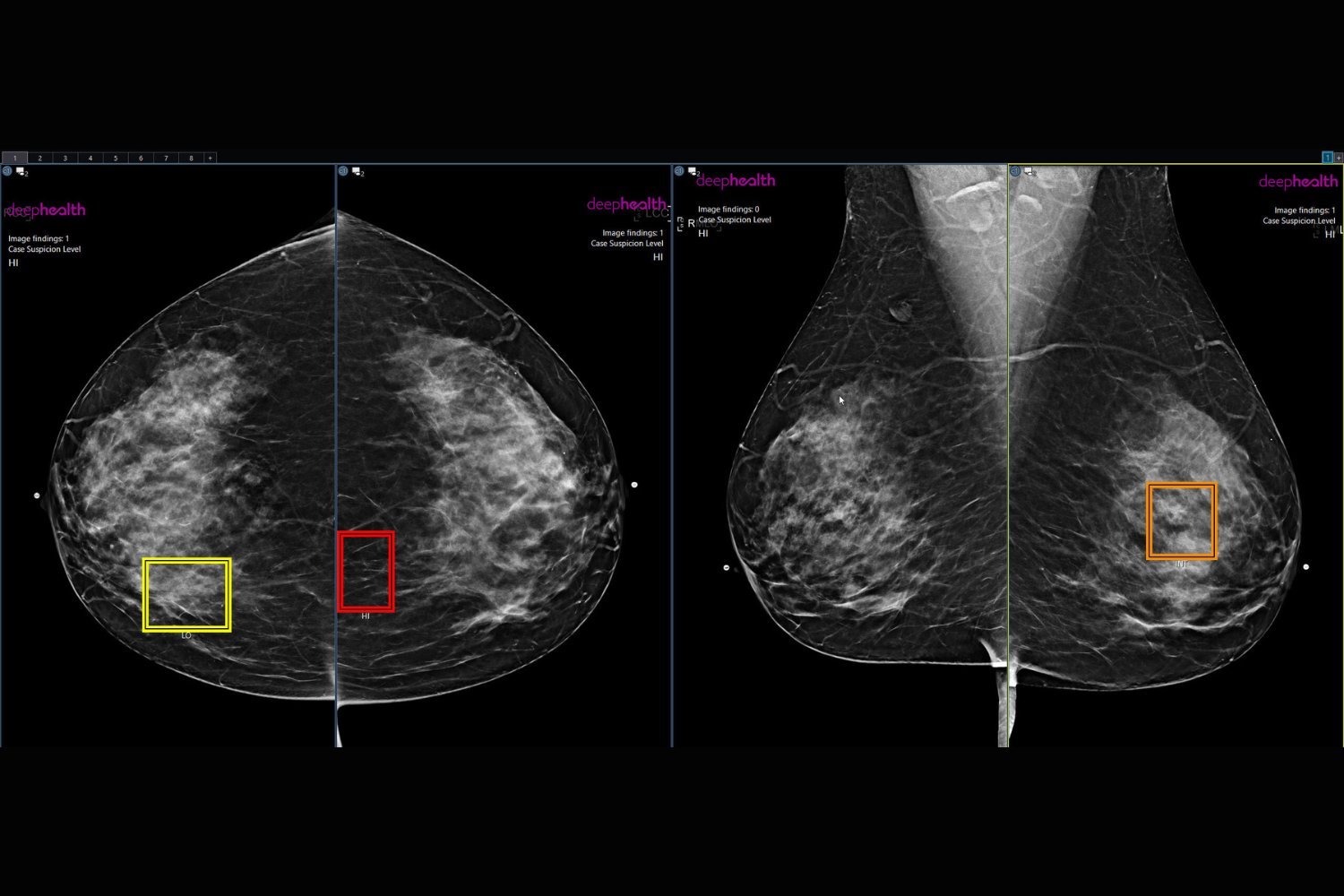The future of diagnostic medicine is taking a cyberpunk turn. Scientists have developed a groundbreaking technology: temporary electronic tattoos that can monitor brain and body activity. This innovation promises to revolutionize diagnostic testing, offering a less cumbersome and more convenient alternative to traditional methods like electroencephalography (EEG).
Overcoming EEG Limitations
EEGs are essential for diagnosing neurological conditions like epilepsy, sleep apnea, and brain tumors, as well as monitoring overall brain health. However, traditional EEG testing involves a lengthy and often uncomfortable process. Medical personnel must meticulously place electrodes on the patient’s scalp, which can take up to two hours. While EEG caps have simplified the procedure, they still rely on cumbersome wires and wet gel that dries out quickly, limiting their effectiveness.
Electronic tattoos, or e-tattoos, have emerged as a potential solution. These ultrathin sensors can track biometrics from the skin’s surface. Previous versions, however, faced limitations due to their inability to function effectively on hairy skin. Researchers at the University of Texas at Austin have overcome this challenge by developing a specialized liquid ink composed of conductive polymers. This ink, applied to the scalp using an inkjet printer, can effectively measure brain activity even through hair.
Enhanced Performance and Longevity
In a study published in Cell Biomaterials, researchers tested their ink on five volunteers with short hair. They used a computer algorithm to determine optimal electrode placement and then applied the ink using a digitally controlled inkjet printer. Traditional electrodes were also attached for comparison. The e-tattoos demonstrated comparable performance in measuring brain activity, but with a significant advantage: a stable connection lasting up to 24 hours, compared to the six-hour limit of traditional electrodes with drying gel.
Further experimentation led to the development of ink lines that replace the wiring used in conventional EEGs. This innovation reduced the number of physical wires required and minimized signal interference, further enhancing the technology’s efficiency.
A Game Changer for Brain-Computer Interfaces
The potential applications of this technology extend beyond improved EEG testing. Researchers envision it as a game changer for brain-computer interface (BCI) devices, which translate brain activity into external commands, such as controlling robotic limbs. E-tattoos could eliminate the need for bulky headsets currently required for BCI operation, offering a seamless and more comfortable user experience.
Future Developments and Wireless Potential
While further research is needed to validate the technology’s accuracy against traditional methods, the potential is immense. Researchers aim to incorporate wireless data transmitters into the ink, paving the way for truly wireless EEG testing and other diagnostic applications. This breakthrough holds promise for revolutionizing brain monitoring and expanding the possibilities of brain-computer interfaces.
Conclusion
The development of temporary electronic tattoos represents a significant advancement in non-invasive brain monitoring. This innovative technology offers a more convenient, comfortable, and potentially more effective alternative to traditional EEG methods. With ongoing research and development, these e-tattoos could transform diagnostic medicine and unlock exciting new possibilities for brain-computer interfaces, ultimately improving patient care and enhancing human-machine interaction.











